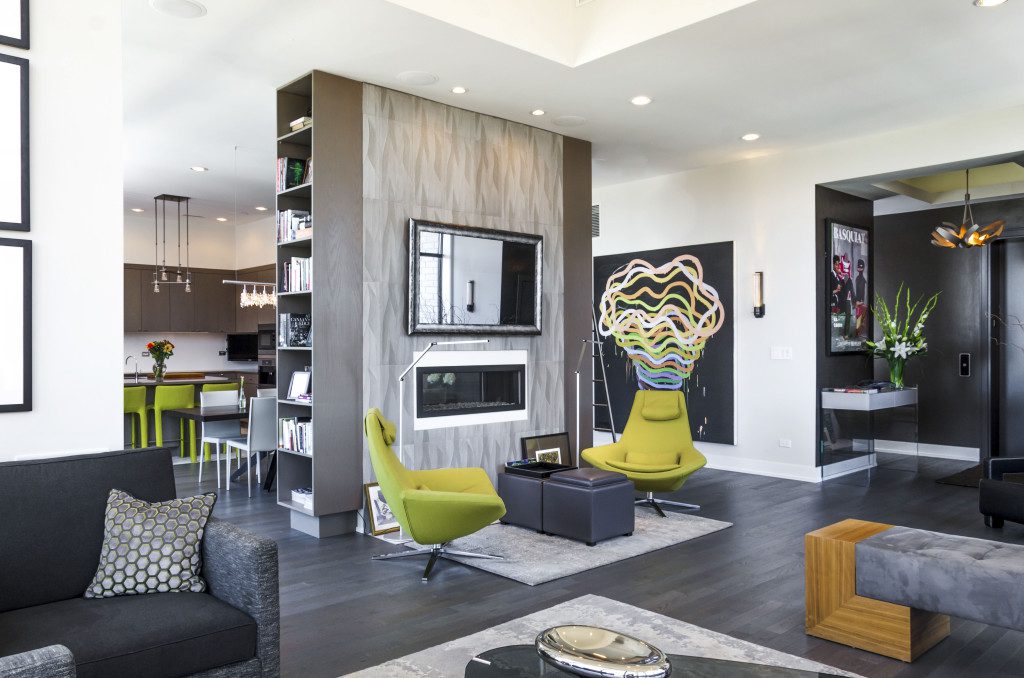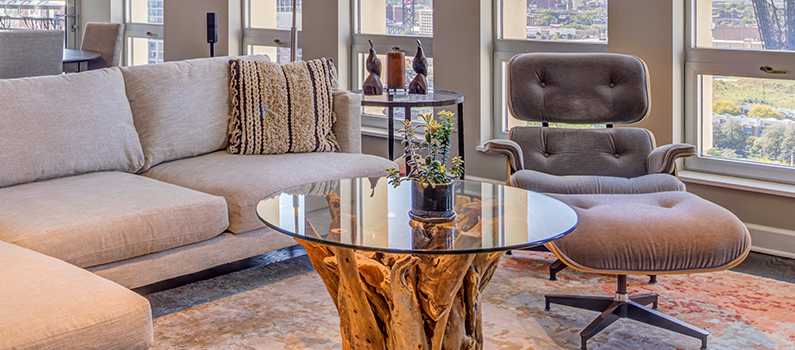There are many people using only overhead lights in their homes, especially in living rooms, dining rooms and family rooms. Flipping on all those overhead lights in a room not only wastes energy, but can add so much light to the space that it creates a harsh feeling in the room. Just like the lighting in kitchens and bathrooms, it’s best to have “layers” of lighting in your living spaces, allowing a change in the level of light intensity depending on the activity. The first layer is ambient lighting. Recessed lights in the ceiling can provide bright light for general lighting. It’s great to have a dimmer on these so they can still be used for general lighting, but at less intensity–for example, at a cocktail party or gathering to watch a football game on TV. The next layer is accent lighting for architectural details and art. This might be a a soffit light, a hidden light in a bookcase, or a directional light that washes a wall or focuses on a piece of art. Lastly, there’s task lighting–lamps and chandeliers that light a specific space for a particular purpose, like reading or dining. There’s much to think about when adding lighting to a space (i.e., should the light be bounced off the ceiling to create a sense of brightness?), but a good place to start is by “layering” for multiple functions and to add warmth and personality to your home.





